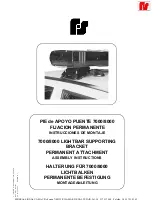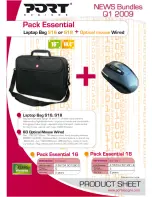
1.2. Charge and discharge warnings
Note
Batteries are tested according to UN Handbook of Tests and Criteria, part III, sub section 38.3
(ST/SG/AC.10/11/Rev.5).
•
For transport the batteries belong to the category UN3480, Class 9, Packaging Group II and have to be transported according to this
regulation. This means that for land and sea transport (ADR, RID & IMDG) they have to be packed according to packaging instruction
P903 and for air transport (IATA) according to packaging instruction P965. The original packaging complies with these instructions.
1.4. Disposal of Lithium batteries
1.3. Transportation warnings
• If the battery is stored for long time, it is required to charge them every six months, and the SOC should be no
less than 90%.
• Battery needs to be recharged within 12 hours, after fully discharged.
• Do not connect battery with PV solar wiring directly.
• Use only with a Z-Range approved BMS
• If charged after the Lithium Battery was discharged below the “Discharge cut-off voltage”, or when the Lithium
Battery is damaged or overcharged, the Lithium Battery can release a harmful mixture of gasses such as
phosphate
• The temperature range over which the battery can be charged is 0°C to 55°C. Charging the battery at
temperatures outside this range may cause severe damage to the battery or reduce battery life expectancy.
• The temperature range over which the battery can be discharged is -15°C to 55°C. Discharging the battery at
temperatures outside this range may cause severe damage to the battery or reduce battery life expectancy.
• The battery must be transported in its original or equivalent package and in an upright position. If the battery is in
its package, use soft slings to avoid damage.
• Do not stand below a battery when it is hoisted.
• Never lift the battery at the terminals or the BMS communication cables, only lift the battery at the handles.
2
• Batteries marked with the recycling symbol must be processed via a recognized recycling agency. By
agreement, they may be returned to the manufacturer.
• Batteries must not be mixed with domestic or industrial waste
• Do not throw a battery into fire.
1.5. Before Connecting
• After unpacking, please check product and packing list first, if product is damaged or lack of parts, please
contact with the local retailer.
• Before installation, be sure to cut off the grid power and make sure the battery is in the turned-off mode.
• Wiring must be correct, do not mistake the positive and negative cables, and ensure no short circuit with the
external device.
• It is prohibited to connect the battery and AC power directly.
• The embedded BMS in the battery is designed for 48VDC, please DO NOT connect battery in series.
• Battery system must be well grounded, and the resistance must be less than 1oumu.
• Make sure the grounding connection set correctly before operation.
• Please ensured the electrical parameters of battery system are compatible to related equipment.
• Keep the battery away from water and fire
SAFETY PRECAUTIONS





































